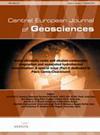Image based remote sensing method for modeling black-eyed beans (Vigna unguiculata) Leaf Area Index (LAI) and Crop Height (CH) over Cyprus
引用次数: 13
Abstract
In this paper, Leaf Area Index (LAI) and Crop Height (CH) are modeled to the most known spectral vegetation index — NDVI — using remotely sensed data. This approach has advantages compared to the classic approaches based on a theoretical background. A GER-1500 field spectro-radiometer was used in this study in order to retrieve the necessary spectrum data for estimating a spectral vegetation index (NDVI), for establishing a semiempirical relationship between black-eyed beans’ canopy factors and remotely sensed data. Such semi-empirical models can be used then for agricultural and environmental studies. A field campaign was undertaken with measurements of LAI and CH using the Sun-Scan canopy analyzer, acquired simultaneously with the spectroradiometric (GER1500) measurements between May and June of 2010. Field spectroscopy and remotely sensed imagery have been combined and used in order to retrieve and validate the results of this study. The results showed that there are strong statistical relationships between LAI or CH and NDVI which can be used for modeling crop canopy factors (LAI, CH) to remotely sensed data. The model for each case was verified by the factor of determination. Specifically, these models assist to avoid direct measurements of the LAI and CH for all the dates for which satellite images are available and support future users or future studies regarding crop canopy parameters.基于影像的塞浦路斯黑眼豆叶面积指数(LAI)和作物高度(CH)遥感建模方法
本文利用遥感数据,将叶面积指数(LAI)和作物高度(CH)模拟成最广为人知的植被光谱指数NDVI。与基于理论背景的经典方法相比,该方法具有优势。本研究利用GER-1500型野外光谱辐射计,检索估算光谱植被指数(NDVI)所需的光谱数据,建立黑豆冠层因子与遥感数据之间的半经验关系。这样的半经验模型可以用于农业和环境研究。在2010年5月至6月期间,利用与光谱辐射测量(GER1500)同时获得的Sun-Scan冠层分析仪对LAI和CH进行了实地测量。为了检索和验证本研究的结果,将场光谱和遥感图像相结合。结果表明,LAI或CH与NDVI之间存在较强的统计相关性,可用于作物冠层因子(LAI, CH)的遥感模拟。每种情况下的模型都通过决定因子进行验证。具体来说,这些模式有助于避免直接测量有卫星图像的所有日期的LAI和CH,并支持未来用户或未来关于作物冠层参数的研究。
本文章由计算机程序翻译,如有差异,请以英文原文为准。
求助全文
约1分钟内获得全文
求助全文
来源期刊

Central European Journal of Geosciences
GEOSCIENCES, MULTIDISCIPLINARY-
自引率
0.00%
发文量
0
审稿时长
>12 weeks
 求助内容:
求助内容: 应助结果提醒方式:
应助结果提醒方式:


